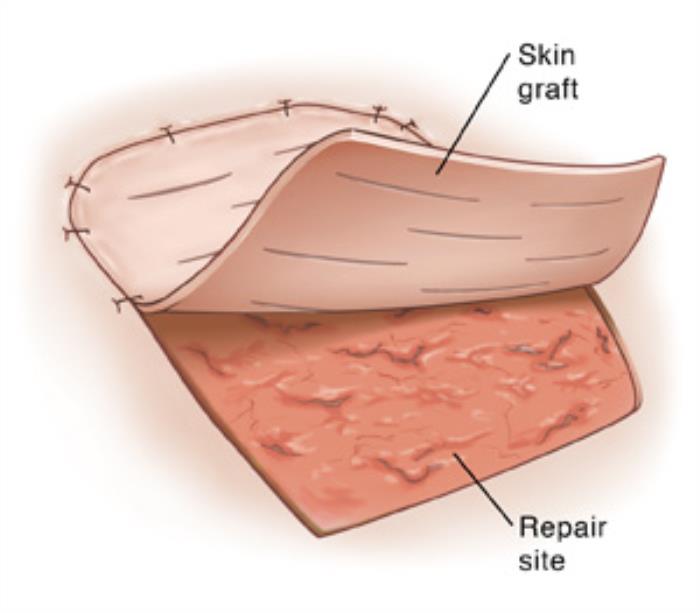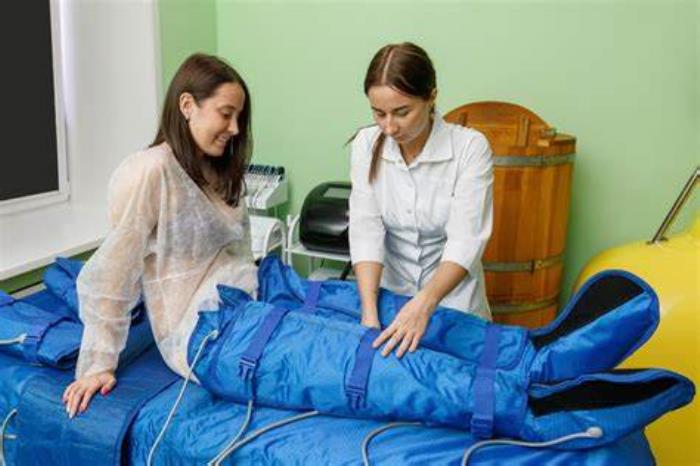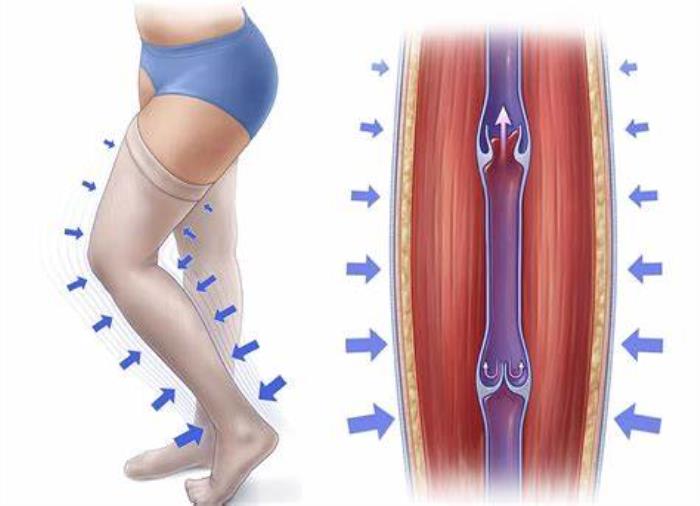Compression therapy involves the use of specialized garments or bandages to apply consistent pressure to certain areas of the body, promoting blood flow and reducing swelling. It is commonly used in medical treatments to help manage conditions such as venous insufficiency, lymphedema, and post-surgical healing.
By applying controlled pressure, compression therapy aids in the movement of blood and lymphatic fluids, reducing the risk of complications such as blood clots and encouraging tissue recovery after surgeries like skin grafting.
Understanding Skin Grafting: Why It’s Done and How It Heals
Skin grafting is a surgical procedure where skin from one part of the body is transplanted to cover a wound, burn, or area with significant skin loss. It is typically done to aid in the healing process when the skin cannot regenerate on its own, such as in cases of trauma, extensive burns, or chronic wounds.

After the graft is applied, the healing process involves the skin graft establishing blood supply and integrating with the surrounding tissue. Proper post-surgical care is crucial to ensure that the graft takes effectively and heals without complications like infection or tissue rejection.
The Importance of Post-Surgery Care in Skin Grafting
Post-surgery care is essential for the success of a skin graft, as it ensures proper healing and reduces the risk of complications. This includes wound care, infection prevention, and following medical guidelines to avoid putting pressure on the graft site.
Keeping the grafted area clean and free from excessive movement is critical during the early healing stages. Additionally, careful monitoring of the graft for signs of rejection, such as discoloration or fluid build-up, can help catch any issues early. Proper care also includes maintaining good nutrition and hydration to support overall tissue recovery.
How Compression Therapy Supports Healing After Skin Grafting
Compression therapy is a valuable component of post-skin grafting care, particularly in reducing complications like fluid build-up, swelling, and scar formation. By applying gentle, even pressure, compression garments or bandages help improve blood circulation to the grafted area, promoting oxygen and nutrient flow essential for healing.

This pressure also helps minimize the risk of edema (swelling caused by fluid accumulation) and aids in the even distribution of skin tension, which can reduce the chances of graft displacement or poor healing. Compression therapy can also enhance the aesthetic outcome by limiting scar tissue formation.
Reducing Swelling and Fluid Build-Up with Compression Therapy
Swelling and fluid retention, common after skin graft surgeries, can hinder the healing process and increase the risk of complications. Compression therapy works to counteract these effects by applying sustained pressure that encourages fluid drainage and reduces edema.
By preventing excessive fluid build-up, compression therapy helps maintain a healthy environment around the graft, ensuring it adheres properly to the underlying tissue. This technique also supports quicker recovery and improves patient comfort by minimizing the sensation of tightness or heaviness that often accompanies swelling post-surgery.
Preventing Scarring and Improving Skin Graft Appearance
After skin grafting, preventing scarring is a primary concern for patients. Compression therapy plays a crucial role in minimizing scar formation by applying consistent pressure to the grafted area. This helps flatten the skin, ensuring that scar tissue doesn’t overgrow, leading to a smoother and more natural appearance.
Compression Therapy and Blood Circulation: Enhancing Recovery
Compression therapy improves blood circulation by exerting gentle pressure on the affected area. This increased blood flow supports the healing process by providing the skin with essential nutrients and oxygen, while also helping to reduce swelling and fluid buildup.

Improved circulation accelerates recovery and promotes better integration of the graft.
The Role of Compression in Minimizing Pain and Discomfort
Wearing compression garments helps alleviate pain and discomfort by reducing swelling and stabilizing the grafted area. By limiting movement and providing support, compression garments minimize irritation and create a more comfortable recovery process.
How Long Should Compression Therapy Be Used After Skin Grafting?
The duration of compression therapy varies based on the individual’s recovery process and the extent of the graft. Generally, patients are advised to wear compression garments for several weeks to months post-surgery, with some cases requiring up to a year of continued use to achieve optimal results.

Choosing the Right Compression Garment for Optimal Results
Selecting the right compression garment is critical for effective recovery. The garment should fit snugly but comfortably, without cutting off circulation. Medical-grade garments specifically designed for post-surgery recovery are ideal, as they provide the necessary pressure while allowing the skin to breathe and heal.
Compression Therapy for Burn Victims: A Specialized Approach
For burn victims, compression therapy is tailored to address the unique needs of healing burned skin. Specialized compression garments are used to minimize scarring, promote even healing, and prevent contractures—tightening of the skin that can limit movement.
Compression therapy also helps reduce the thickening of scar tissue (hypertrophic scarring) commonly seen in burn patients.
Managing Complications with Compression Therapy Post-Grafting
While compression therapy is generally beneficial, complications such as improper fit or excessive pressure can lead to issues like skin irritation, numbness, or restricted blood flow. Patients should work closely with their healthcare providers to ensure the garments are fitted correctly and address any complications early.
How Compression Therapy Helps with Skin Graft Integration
Compression therapy aids in the integration of the skin graft by reducing tension on the grafted area and allowing the new skin to adhere smoothly to the underlying tissue. By maintaining even pressure, compression garments support better graft survival and reduce the likelihood of complications like graft rejection or poor healing.
Improving Skin Elasticity and Tissue Strength with Compression
Long-term use of compression garments can help improve skin elasticity and strengthen the underlying tissues. This leads to a more resilient skin structure, minimizing the risk of future tearing or damage, especially in areas where the skin is thinner or more delicate.
Combining Compression Therapy with Other Post-Graft Treatments
Compression therapy can be combined with other post-graft treatments, such as silicone sheets or gels for scar reduction, and physical therapy for mobility restoration. These combined therapies create a comprehensive approach to healing, addressing both the aesthetic and functional aspects of recovery.
Tips for Wearing and Maintaining Compression Garments
To maximize the benefits of compression therapy, it’s important to wear the garments as prescribed. Ensure they are clean and properly maintained to avoid irritation or infection.
Garments should be washed regularly, and patients should have multiple sets to alternate between for cleanliness and comfort.
When to Stop Compression Therapy: Monitoring Progress
The decision to stop compression therapy should be made in consultation with a healthcare professional, typically after the graft has fully healed, and the risk of scarring has significantly reduced. Regular check-ups and monitoring will determine when compression therapy is no longer necessary.
Patient Experiences: Success Stories with Compression After Skin Grafting
Many patients report significant improvements in both the appearance of their skin grafts and their overall comfort during recovery. Success stories highlight the importance of adherence to the prescribed compression regimen, with patients experiencing fewer complications, reduced scarring, and faster recovery times.
Long-Term Benefits of Compression Therapy in Skin Graft Recovery
In the long term, compression therapy provides sustained benefits, including smoother skin, less noticeable scars, and improved skin elasticity. Patients who commit to the therapy often report better overall results and satisfaction with the appearance and function of their grafted skin.
Conclusion: Maximizing Recovery with Compression Therapy
Compression therapy is a vital part of skin graft recovery, offering numerous benefits, from preventing scarring to enhancing skin graft integration. When used consistently and in combination with other treatments, compression garments can significantly improve both the aesthetic and functional outcomes of skin grafts.
Understanding the Role of Stem Cells in Skin Regeneration and Grafting
Explore the importance of stem cells in skin regeneration and grafting. This section discusses how stem cell therapies are revolutionizing wound healing and enhancing the success of skin grafts by promoting tissue regeneration and reducing recovery times.
Pediatric Considerations in Skin Grafting for Burn Treatment
Learn about the unique considerations for skin grafting in pediatric patients suffering from burns. This section addresses the challenges associated with treating young patients, including growth considerations, psychological impacts, and specialized care techniques to ensure optimal healing.
Best Skin Grafts for Burn Treatment in India
The Best Skin Grafts for Burn Treatment in India offer effective solutions for severe burns, helping restore skin function and appearance through advanced surgical techniques.
Best Hospitals for Skin Grafts in India
The Best Hospitals for Skin Grafts in India are equipped with cutting-edge technology and experienced specialists, providing comprehensive care for patients from initial consultation to recovery.
Skin Graft Surgery Cost in India
The Skin Graft Surgery Cost in India is affordable and transparent, ensuring patients receive high-quality care without compromising on the standards of treatment.
Best Skin Graft Surgeons in India
The Best Skin Graft Surgeons in India are experts in reconstructive surgery, providing personalized and precise care to ensure the best outcomes for burn patients.
FAQ
How does compression therapy help after skin grafting?
Compression therapy aids in reducing scarring, improving blood circulation, and promoting skin graft integration. It also helps manage swelling and discomfort, leading to a smoother recovery.
How long should I wear a compression garment after surgery?
The duration varies depending on the individual’s recovery and the extent of the graft, but most patients are advised to wear compression garments for several weeks to months, and in some cases, up to a year.
What types of compression garments are best after skin grafting?
Medical-grade compression garments designed for post-surgical recovery are ideal. They should fit snugly but not restrict blood flow, allowing for even pressure and skin healing.
Can compression therapy prevent scarring after a skin graft?
Yes, compression therapy helps flatten the skin, minimizing the formation of raised scars and hypertrophic scarring, which are common after skin grafts.
Are there any risks associated with using compression garments?
If not properly fitted, compression garments can cause skin irritation, numbness, or restricted blood flow. It’s important to work with a healthcare provider to ensure proper fit and usage.